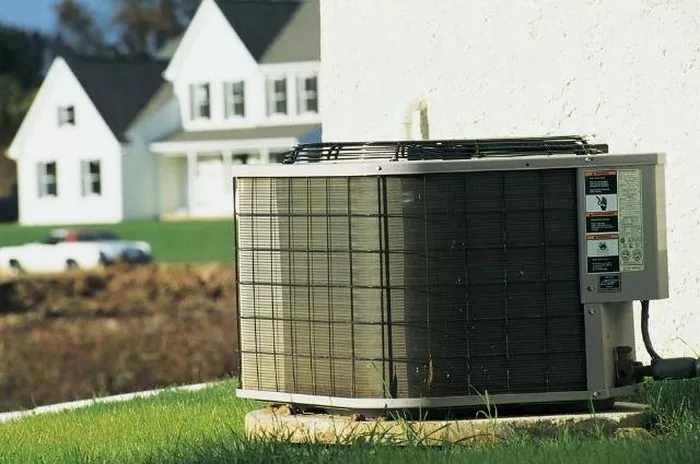When considering whether a 2200-watt generator can power an air conditioner, several factors come into play. From understanding the power requirements of air conditioners to evaluating the capacity of the generator, it’s essential to consider every detail. This article explores all aspects of this topic to help you make an informed decision.
Understanding Air Conditioner Power Requirements
Air conditioners vary widely in size, type, and power consumption. To determine whether a 2200-watt generator can handle your air conditioner, you need to understand its specific power needs. These are typically categorized into starting wattage and running wattage.
Key Power Terms to Know
Starting Wattage: The amount of power required to start the compressor of the air conditioner. This is usually 2-3 times higher than the running wattage due to the initial surge of power needed.
Running Wattage: The continuous power needed to keep the air conditioner operating once the compressor is running.
For example, a small window air conditioner with a cooling capacity of 5,000 BTU often requires about 1,200 starting watts and 500 running watts. In contrast, a larger unit, such as a 12,000 BTU air conditioner, may need 3,000 starting watts and 1,000 running watts.
Types of Air Conditioners and Their Power Usage
Window Air Conditioners: These compact units are popular for single rooms. Smaller models may operate on less than 1,000 running watts, making them suitable for a 2200-watt generator. However, larger models might exceed the generator’s capacity, especially during startup.
Portable Air Conditioners: Portable units are similar to window air conditioners in terms of power requirements. Smaller models often work with a 2200-watt generator, but units designed for larger spaces could demand more power.
Central Air Conditioning Systems: Central systems are not a feasible option for a 2200-watt generator. They typically require several thousand watts, even during normal operation.
Mini-Split Systems: Mini-splits vary widely in power consumption. While smaller units might work with a 2200-watt generator, most multi-zone systems require significantly more power.
Evaluating the Capability of a 2200-Watt Generator
To determine if a 2200-watt generator can run your air conditioner, you must consider both the generator’s capacity and the air conditioner’s power demands.
Starting and Running Wattage
A 2200-watt generator offers a maximum of 2200 watts for a brief period (surge capacity) and typically provides a continuous output of around 1800-2000 watts. This is crucial for handling devices with high starting wattage requirements.
If your air conditioner’s starting wattage is below 2200 watts and its running wattage is below 1800 watts, the generator should be capable of powering it.
If the starting wattage exceeds 2200 watts, the generator will not be able to start the air conditioner.
Additional Power Considerations
Generators often power more than one appliance. If you plan to use the generator for other devices alongside the air conditioner, you must ensure the combined wattage does not exceed the generator’s capacity.
Refrigerators: Typically require 700-1200 starting watts.
Lights: Energy-efficient LED bulbs use minimal wattage, usually 5-10 watts each.
Fans: Require about 50-100 watts.
Adding these to your air conditioner’s demands can quickly exceed the generator’s limits.
How to Determine Your Air Conditioner’s Wattage
Check the user manual or specification label on your air conditioner to find its wattage. Alternatively, use this formula if only the amperage and voltage are listed:
Watts = Volts × Amps
For example, an air conditioner that operates on 120 volts and draws 10 amps would require 1,200 watts.
Practical Scenarios: Will It Work?
Scenario 1: Small Window Air Conditioner
- Starting Wattage: 1,200 watts
- Running Wattage: 500 watts
A 2200-watt generator can easily handle this unit, even if additional appliances are connected.
Scenario 2: Medium Portable Air Conditioner
- Starting Wattage: 2,200 watts
- Running Wattage: 1,200 watts
While the running wattage is within the generator’s continuous capacity, the starting wattage may push the generator to its limit, causing potential overload.
Scenario 3: Large Mini-Split Air Conditioner
- Starting Wattage: 3,000 watts
- Running Wattage: 1,800 watts
This exceeds the generator’s surge capacity and is not feasible for a 2200-watt generator.
Tips to Optimize Generator Performance
If you’re determined to use a 2200-watt generator to power an air conditioner, here are some tips to maximize efficiency and prevent overloads:
Start with No Other Appliances Connected: Disconnect all other devices before starting the air conditioner. This ensures the full capacity of the generator is available for the initial surge.
Use a Soft-Start Kit: A soft-start kit reduces the initial power surge required to start an air conditioner’s compressor. This can make a higher starting wattage air conditioner compatible with a 2200-watt generator.
Regular Maintenance: Ensure the generator is in good working condition. Clean filters and properly tuned engines maximize efficiency.
Choose an Energy-Efficient Air Conditioner: Models with energy-saving features, such as inverter technology, often require less power.
Alternatives to a 2200-Watt Generator
If your air conditioner’s power requirements exceed the capacity of a 2200-watt generator, consider upgrading to a larger generator. Popular options include:
- 3,000-Watt Generators: Suitable for medium air conditioners and additional small appliances.
- 5,000-Watt Generators: Can handle larger air conditioners or multiple devices simultaneously.
Conclusion
A 2200-watt generator can run a small or medium-sized air conditioner, provided the unit’s starting and running wattages fall within the generator’s limits. For larger air conditioners or setups requiring multiple appliances, a higher-capacity generator may be necessary. Always calculate your specific power needs to ensure compatibility and prevent potential overloads.
Related topics:

